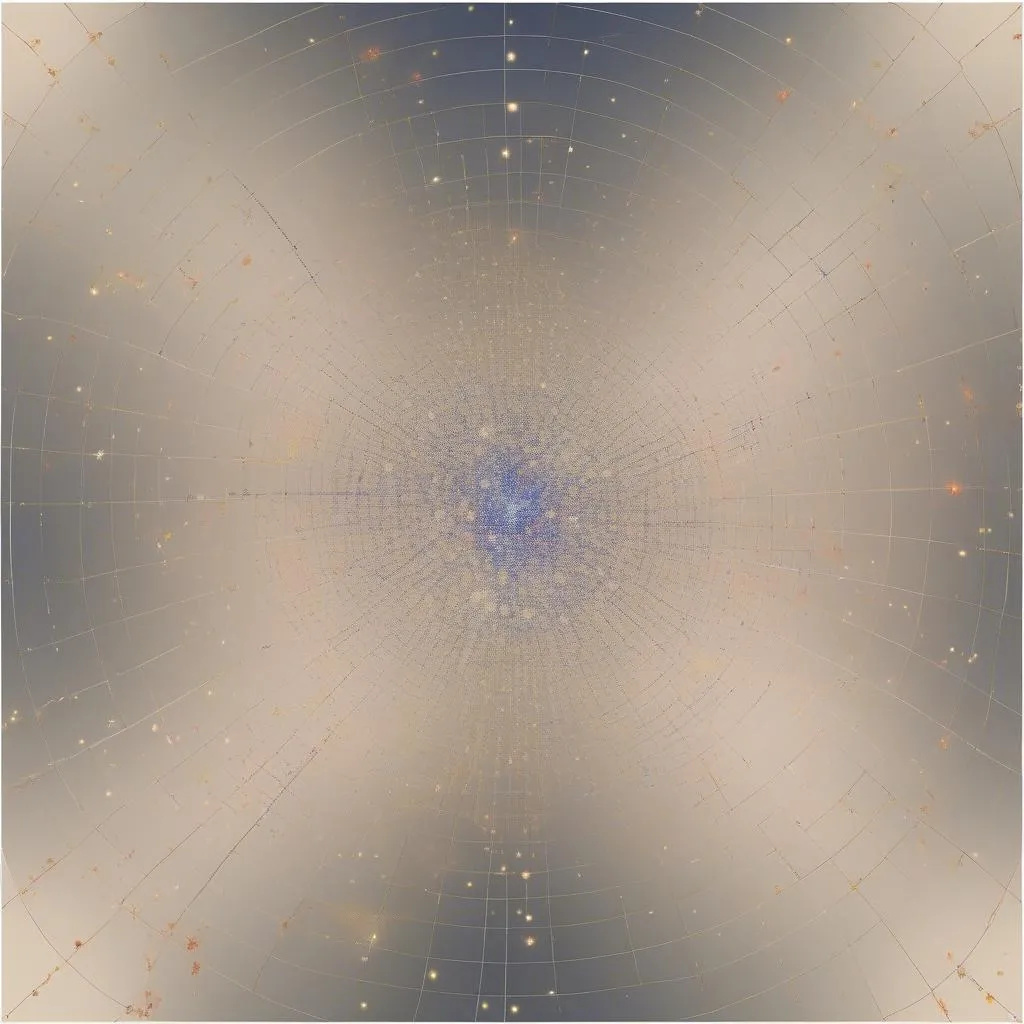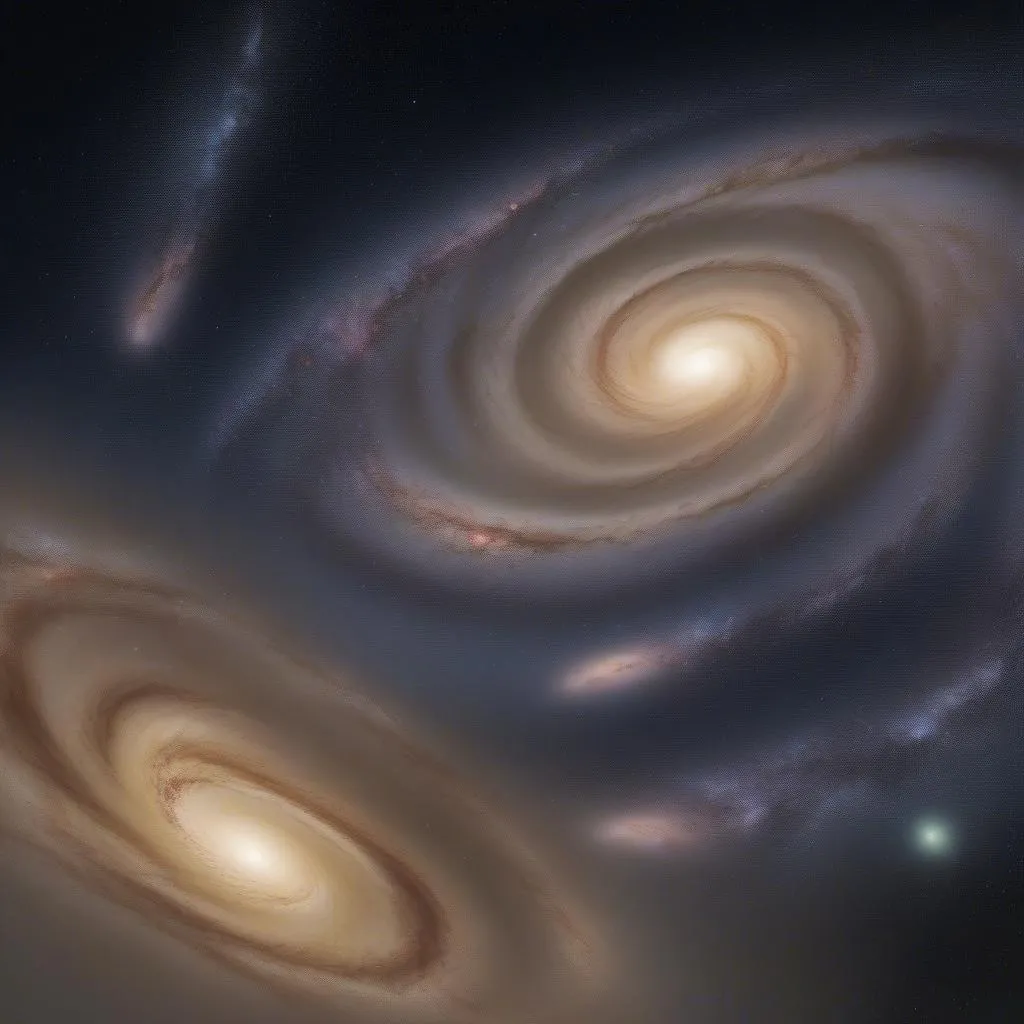Have you ever stood under a vast, star-studded sky and felt a sense of awe and wonder about the universe’s boundless mysteries? Perhaps you’ve pondered the nature of galaxies like the Milky Way, vast collections of stars, gas, and dust scattered throughout the cosmos. One question that often arises is: are all galaxies traveling in the same direction?
Imagine for a moment, a cosmic dance floor where galaxies waltz and twirl across the universe. Are they moving in harmony, or is it a more chaotic ballet? Let’s explore this intriguing question.
The Expansion of the Universe: A Cosmic Conveyor Belt
To understand galactic motion, we must first grasp the concept of the expanding universe. Imagine the universe as a giant loaf of raisin bread dough rising in the oven. As the dough expands, the raisins (representing galaxies) move further apart. The interesting thing is, it’s not that the raisins themselves are moving through the dough; rather, the space between them is stretching, carrying them along for the ride.
The expansion of the universe is analogous to this raisin bread scenario. The space between galaxies expands, making it seem like they are moving away from each other.
Redshift: Clues to Galactic Motion
Astronomers observe this expansion through a phenomenon called redshift. As light from distant galaxies travels towards us, the expansion of space stretches the light waves, causing them to shift towards the red end of the electromagnetic spectrum. The farther a galaxy, the greater its redshift, indicating it’s moving away from us at a faster rate.
So, Are All Galaxies Moving in the Same Direction?
Here’s where things get interesting. While the expansion of the universe drives galaxies apart on a large scale, it doesn’t mean they all move uniformly in the same direction. Galaxies also have what we call “peculiar velocities” – individual movements influenced by the gravitational pull of nearby galaxies or galaxy clusters.
Think of a group of boats floating on a river. While the current may carry them downstream collectively, each boat can still move independently due to wind or rowing. Galaxies behave similarly; they are influenced by the overall expansion but can deviate from a perfectly uniform flow due to gravitational interactions.
For example, our Milky Way galaxy and the Andromeda galaxy are on a collision course, drawn together by their mutual gravitational attraction. This movement overrides the expansion effect on a local scale, eventually leading to a spectacular galactic merger billions of years from now.
 expanding-universe
expanding-universe
Exploring the Cosmic Dance: Further Research and Discoveries
Astronomers continue to study galactic motion and map the universe with increasing precision. Projects like the Sloan Digital Sky Survey have helped us understand the distribution and movement of galaxies in greater detail. As we delve deeper into the cosmos, we unravel more secrets about the complex dance of galaxies.
Questions We Often Hear About Galaxy Movement
- Do galaxies rotate? Yes, most galaxies, including our Milky Way, rotate around their centers.
- What is the Great Attractor? It’s a gravitational anomaly in intergalactic space that appears to be pulling many galaxies, including our own, towards it.
- Will all galaxies eventually collide? While some galaxies are destined for mergers, others will continue to move apart due to the universe’s expansion.
 milky-way-andromeda-collision
milky-way-andromeda-collision
Travelcar.edu.vn: Your Gateway to Exploration
Speaking of exploration, if you’re intrigued by the wonders of the cosmos and have a thirst for knowledge, be sure to visit Travelcar.edu.vn. We offer a wealth of resources and fascinating articles on various topics, including space exploration, travel destinations, and much more.
For those interested in the science of light and distance, our article on “How Far Can Laser Light Travel” might pique your interest: [link to the article: https://travelcar.edu.vn/how-far-can-laser-light-travel/].
And if you’re curious about the celestial mechanics of our solar system, be sure to check out our piece on “A Grain Travels on a Circular Orbit Around the Sun”: [link to the article: https://travelcar.edu.vn/a-grain-travels-on-a-circular-orbit-around-the-sun/].
Conclusion
So, while the expansion of the universe sets galaxies adrift from each other on a grand scale, their movements are far from simple or unidirectional. The cosmic dance of galaxies involves a complex interplay of expansion, gravity, and peculiar velocities. As we continue to explore the universe, we uncover more intricate details about this mesmerizing ballet, reminding us of the vastness and wonder of the cosmos.
Don’t hesitate to share your thoughts, questions, and any fascinating space facts you might know in the comments below. Let’s keep the conversation going and explore the universe together!